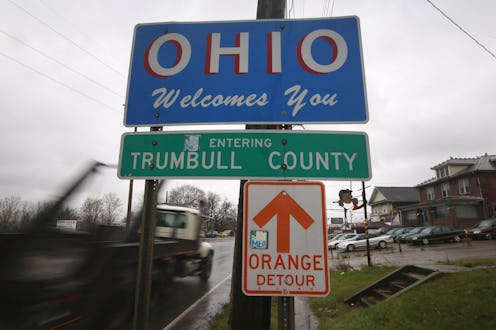Since it's known as a swing state, Ohio electors and their votes have always played a significant role in recent presidential elections. And though other battleground swing states have emerged this election year, Ohio's 18 electors will surely continue to play a big role in determining the results on Election Day.
A state's number of electors is determined by the number of Congress members it has — two senators plus the total number of House representatives. A state's number of Congress members is determined by its population, and, in this case, Ohio's number of Congressional representatives is determined by the 2010 census, which is valid for the 2012, 2016, and 2020 presidential elections.
The Electoral College has a total of 538 electors and electoral votes, 270 or more of which are required for a presidential candidate to win the election. In previous elections, winning Ohio's electoral votes was considered absolutely essential to winning the presidency, as voting propensities in other states made it exceedingly difficult for previous candidates to win the election without winning Ohio. Indeed, no candidate has won the presidency without winning Ohio since John F. Kennedy's election in 1960.
While Ohio is certainly still considered a swing state in this election, some strategists believe winning Ohio's electoral votes is perhaps more important for Donald Trump than it is for Hillary Clinton. According to The New York Times, for Clinton, there still exists a path to victory and a way of reaching 270 electoral votes even if she does not win Ohio; however, without Ohio's votes, the chances for Trump are much slimmer.
While Ohio is still in play for either candidate, Trump is indeed favored to win the state, a notion of which the Clinton campaign seems to be readily aware, as Clinton has somewhat limited her campaign events in the state in the past few months. The New York Times reports that this shift in Ohio from a dead heat swing state to a slightly more red-leaning state is largely due to the fact that Ohio's demographic makeup is no longer as reflective of the nation as a whole.
However, it's clear that neither candidate takes the state for granted. Bill Clinton was just campaigning in Ohio on behalf of his wife on Saturday, and indicated that "they normally send [him] to places where her opponent is strong." For his part, Trump just held a rally last week in northeastern Ashtabula County.
Thus, while Ohio and its 18 electoral votes may not hold quite the same level of Electoral College significance for both candidates as they did in the previous presidential election, it is clear that both candidates still see Ohio as very much in play, and desire a victory in the historically important state.
